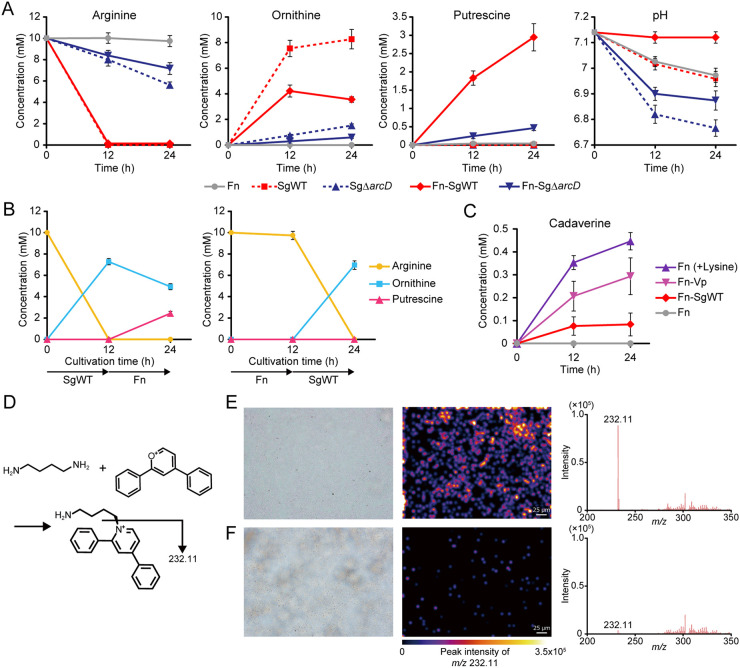FIG 4.
Commensal-triggered polyamine production by F. nucleatum. (A) Extracellular concentrations of arginine, ornithine, and putrescine in CDM containing 10 mM arginine incubated anaerobically for 12 and 24 h were determined by UPLC after bacterial cells were removed. Extracellular pH changes are also shown. (B) Shifts in the extracellular concentrations of arginine, ornithine, and putrescine in CDM containing 10 mM arginine incubated initially with S. gordonii or F. nucleatum for 12 h and then with its counterpart for an additional 12 h. (C) Changes in cadaverine concentrations were determined in supernatants of the designated cultures. Data are shown as the means with SDs of a representative experiment of three biological replicates. (D) Schematic of putrescine imaging. Using 2,4-diphenyl-pyranylium tetrafluoroborate (DPP-TFB), in situ derivatization was performed, and the distribution of putrescine (target m/z 232.11) was visualized through matrix-assisted laser desorption ionization mass spectrometry imaging (MALDI-MSI). (E and F) Shown are optical images and imaging results of biofilms formed on indium-tin-oxide (ITO)-coated glass slides by immersion for 24 h in F. nucleatum monocultures developed in PBS (E) with or (F) without 10 mM ornithine. Color brightness corresponds to concentration of putrescine. Fn, F. nucleatum subsp. nucleatum ATCC 25586; SgWT, S. gordonii DL1; SgΔarcD, S. gordonii DL1 ΔarcD mutant; Vp, V. parvula JCM 12972.

